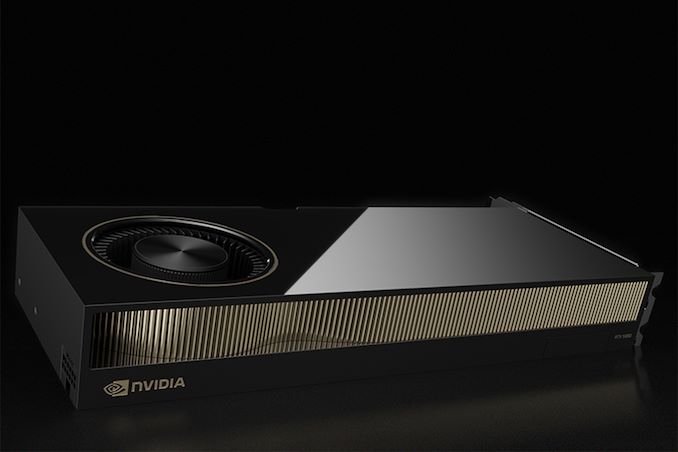
NVIDIA has quietly launched its RTX 5880 Ada Generation graphics card that is designed for professional graphics applications. The product is designed to be compliant with the latest U.S. export regulations for China and can be shipped to the People’s Republic without restrictions. Meanwhile, it is set to be available globally and sit between the expensive flagship RTX 6000 Ada Generation and considerably less capable RTX 5000 Ada Generation. But there is a major catch about this product.
NVIDIA’s RTX 5880 Ada Generation is based on the company’s flagship AD102 graphics processor with 14,080 CUDA cores, 110 RT cores, 440 tensor cores, and a 384-bit memory interface to connect 48 GB of GDDR6 memory with ECC. The board comes with four DisplayPort 1.4a connectors and can support either four 4K monitors at 120 Hz, four 5K displays at 60 Hz, or two 8K monitors at 60 Hz. As for power consumption and heat dissipation, it is rated at 285W (with power delivered using one 12VHPWR connector) and comes with a standard dual-slot cooling system with a blower.
As the model number suggests, NVIDIA’s RTX 5880 Ada Generation 48 GB should be close to the range-topping RTX 6000 Ada 48 GB. Unfortunately, this is not the case and this is a major catch about the RTX 5880 Ada. From performance point of view, NVIDIA’s RTX 5880 Ada offers 69.3 FP32 TFLOPS and 554 FP8 TFLOPS, which is closer to the RTX 5800 Ada 32 GB (65.3 FP32 TFLOPS and 522.1 FP8 TFLOPS) rather than to the RTX 6000 Ada 48 GB (91.1 FP32 TFLOPS and 729 FP8 TFLOPS).
NVIDIA’s RTX 6000 Ada has a rather whopping FP8 Total Processing Performance (TPP) score of 5,828 (listed processing power multiplied by the length of operation), which is way higher than 4800 points that the U.S. Department of Commerce wants Chinese entities to get. So, the RTX 5880 Ada has a TPP score of 4432, which comfortably fits within the export requirements of the U.S. government.
But this also means that the RTX 5880 Ada is significantly slower than the RTX 6000 Ada, despite the model number. Truth to be told, the RTX 5880 Ada looks more like an RTX 5000 Ada on steroids rather than a slightly downgraded RTX 6000 Ada.
| NVIDIA’s Ada Generation High-End Professional Graphics Cards | |||
| RTX 6000 Ada | RTX 5880 Ada | RTX 5000 Ada | |
| GPU | AD102 | ||
| Memory | 48 GB GDDR6 with ECC | 32 GB GDDR6 ECC | |
| CUDA Cores | 18,176 | 14,080 | 12,800 |
| Tensor Cores | 568 | 440 | 400 |
| RT Cores | 142 | 110 | 100 |
| FP32 Performance | 91.1 TFLOPS | 69.3 TFLOPS | 65.3 TFLOPS |
| RT Performance | 210.6 TFLOPS | 160.2 TFLOPS | 151 TFLOPS |
| Tensor Performance | 729 TFLOPS | 554 TFLOPS | 522.1 TFLOPS |
| TPP | 5828 | 4432 | 4176 |
| Encode/Decode | 3 x encode, 3 x decode (+AV1 encode and decode) | ||
| Display Connectors | 4 x DisplayPort 1.4a | ||
| Power | 300W | 285W | 250W |
| MSRP | $6999 | ? | $4000 |
What remains to be seen is the price of the RTX 5880 Ada. NVIDIA’s RTX 5000 Ada has a list price of $4,000, whereas the RTX 6000 Ada has an MSRP of $6,999. It is logical to expect the RTX 5880 Ada to cost closer to the RTX 5000, but not just slightly higher, because after all it has a rather capable 48 GB memory subsystem.
Sources: NVIDIA, RTX 5880 Ada datasheet







